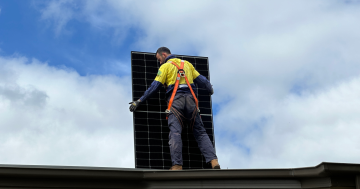Whilst reviewing some of the bills I receive recently, I happened to look at ACTEW’s tariffs for electricity supply. It turns out that ACTEW actually offer three different plans for electricity supply. Looking at the details you would have a hard time working out which was the cheapest for your situation as there is a trade off between a higher daily supply charge and a lower charge per kilowatt hour.
Not being one to be put off by a few linear equations, I’ve worked out the best value options.
- If you use less than 13.3kWh per day then the Always Home@ActewAGL plan is best value
- If you use between 13.3kWh and 31.5kWh per day then the Always Home@ActewAGL Saver plan is the best value
- If you use greater than 31.5kWh per day then the Always Home@ActewAGL Saver Plus plan is the best value
Interestingly, the more power you use, the cheaper it gets.
The savings from having the best plan are considerable. For my last bill I used 3336kWh over 103 days (average 32kWh per day). On the standard plan it cost me $494.33. It would have cost $460.79 on the Saver plan and only $456.98 on the Saver Plus plan (a $37.35 saving).
Now I hear about the ‘bundle five services and we’ll give you 10%’ discount offer quite frequently but I’ve never heard that there were other plans available. Anyone who uses more than a minimal amount of electricity and is on the standard plan (most of Canberra I would expect) is paying too much.
To change plans give ActewAGL Customer Services a call on 13 14 93.
The other interesting thing about the tariffs is that if you have a solar generation system, ACTEW will generously buy the power from you at 7.4 cents per kWh but then sells it as GreenChoice power at up to 18.3 cents per kWh.




















